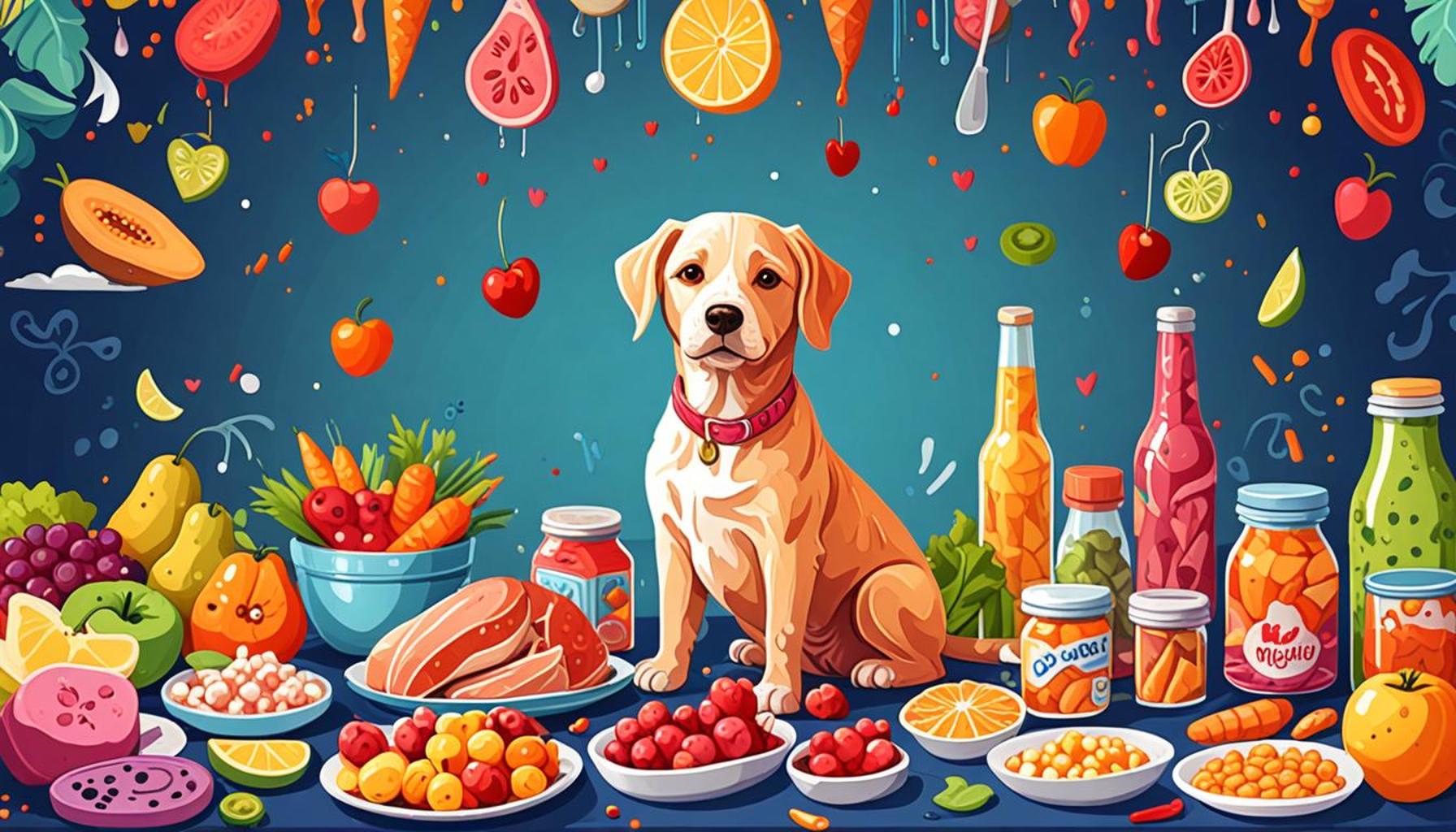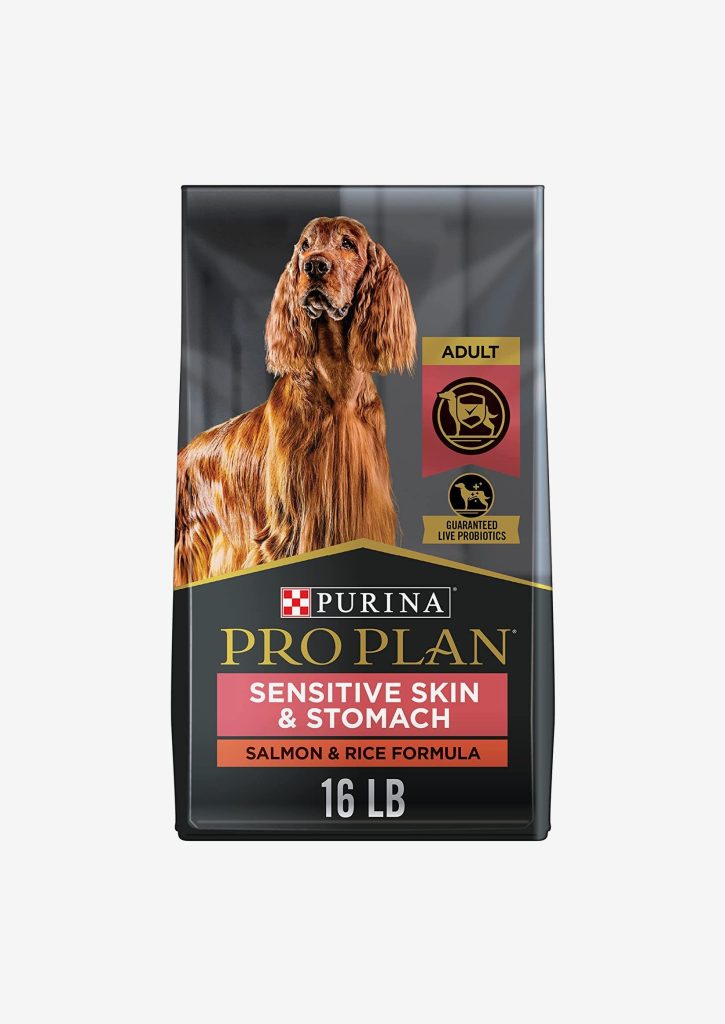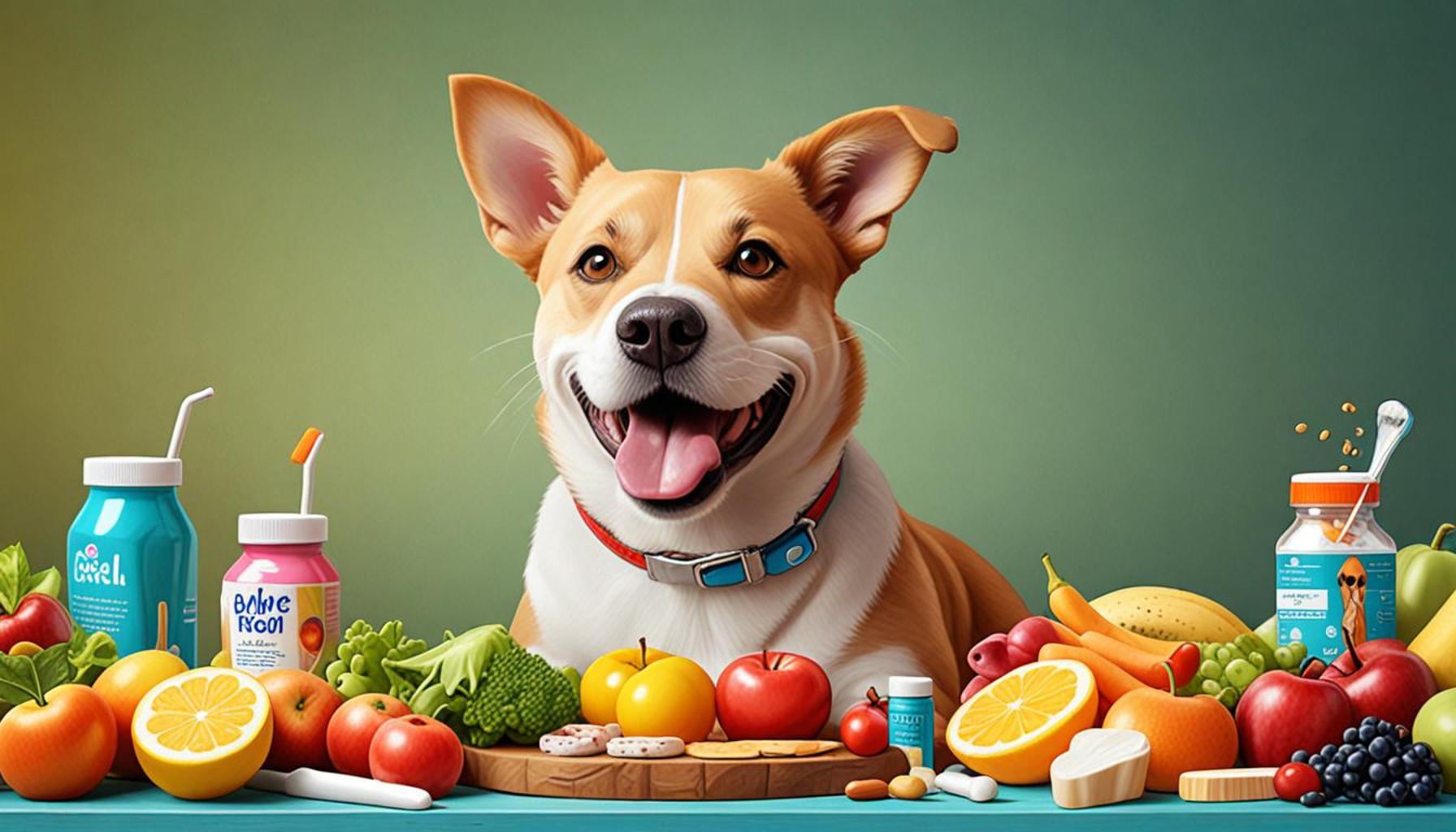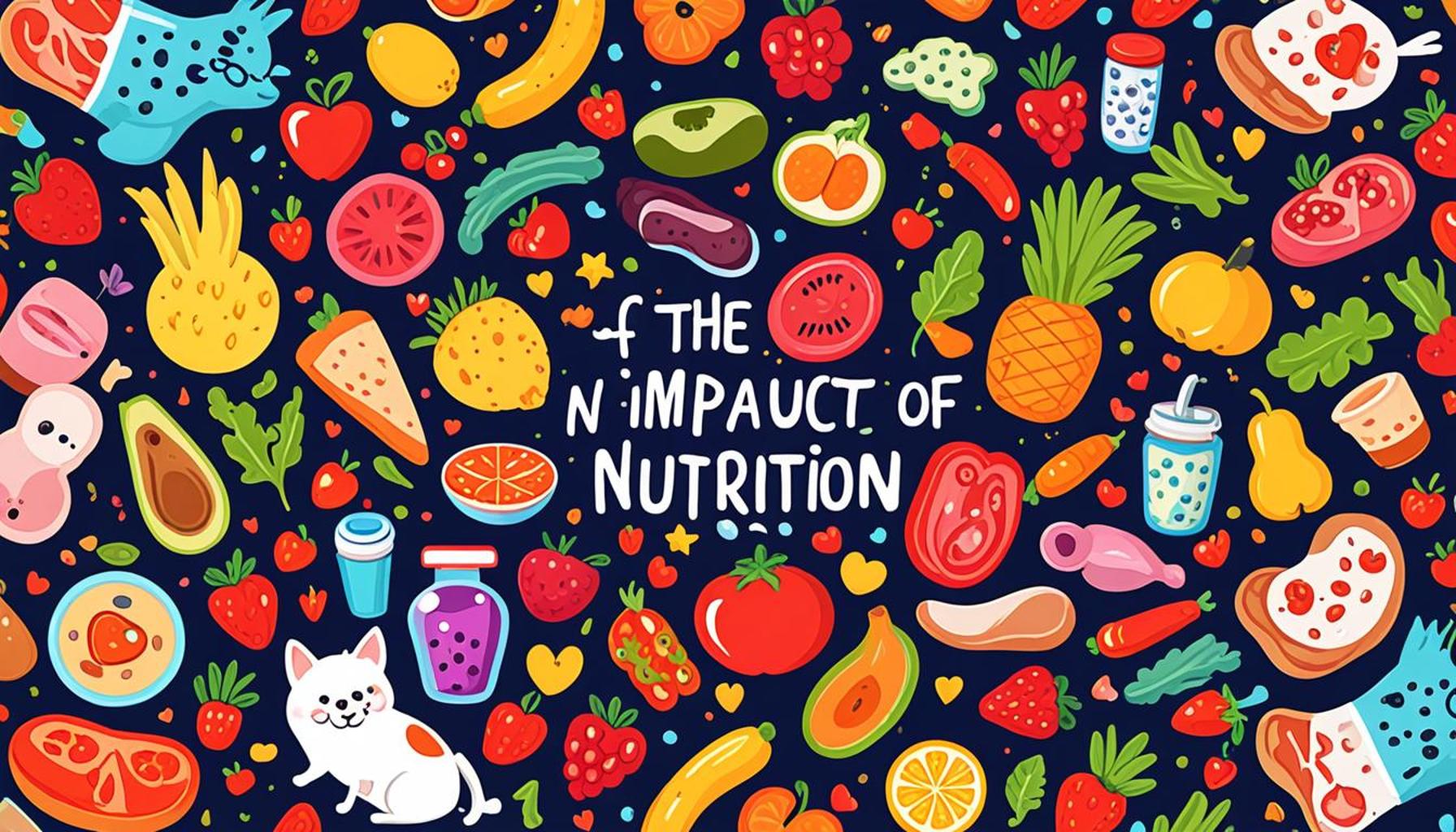The Influence of Age on Pet Nutrition

Understanding Pet Nutrition Through the Ages
When it comes to pet nutrition, age plays a crucial role that every pet owner should recognize. Just like humans, pets undergo significant changes as they grow older, and their dietary needs change accordingly.
Understanding the different stages of a pet’s life can help in making informed dietary decisions. Here are key age-related categories to consider:
- Puppies and Kittens: Require energy-dense food for rapid growth.
- Adults: Need a balanced diet to maintain health and energy levels.
- Seniors: Often need lower-calorie diets to combat obesity and other age-related issues.
Each of these stages presents unique nutritional requirements. For instance, senior pets often face health issues such as arthritis or kidney problems, which can influence their nutritional needs. To illustrate, puppies need food that is rich in protein and calories, such as high-quality puppy formulas designed to support their rapid growth, boost immunity, and provide essential nutrients for developing bones and muscles. Similarly, kittens require specific nutrients like DHA, found in fish oils, to promote brain development and enhance their coordination.
As pets transition to adulthood, their nutritional focus shifts. Adult pets typically require a well-balanced diet that maintains their overall health while providing sustained energy. This may include a combination of proteins, fats, carbohydrates, vitamins, and minerals. Everything from the quality of the animal protein used to the source of carbohydrates can significantly influence a pet’s long-term health. For example, a dog with an active lifestyle might benefit from a diet rich in omega fatty acids to support healthy joints and a shiny coat.
When pets reach their senior years, adjustments are often necessary. Obesity is a common issue at this stage, leading to a need for lower-calorie diets to help maintain a healthy weight. Senior pets may also benefit from special nutrition that addresses age-related conditions. For instance, diets enriched with glucosamine can help alleviate joint pain associated with arthritis, while formulations with a reduced protein source can ease strain on aging kidneys, commonly noted in older cats. Additionally, fiber can assist with digestive health, ensuring dogs and cats maintain a healthy metabolism as they age.

As we explore the influence of age on pet nutrition, we will delve into specific dietary requirements, common misconceptions, and practical tips for feeding pets throughout their lives. It’s critical for pet owners to stay informed about how to adjust their pets’ diets as they grow older, recognizing that what works for a young, energetic pet may not suit an aging companion. Understanding these factors can enhance pet health, longevity, and overall well-being, ensuring that beloved pets lead happy, healthy lives regardless of their age.
DISCOVER MORE: Click here for essential diet tips for your pet’s health
Nutritional Needs of Puppies and Kittens
The journey of understanding pet nutrition begins with the youngest members of the family—puppies and kittens. These adorable furballs experience astonishing growth and developmental changes within the first few months of life. During this period, their need for energy-dense food is paramount. Commercially available puppy and kitten formulas are meticulously crafted to meet these demands, ensuring that these young pets receive the proper balance of nutrients necessary for their expanding bodies.
Puppies, in particular, require a diet rich in protein and fat to support their rapid growth. High-quality puppy foods are specially formulated to include not only higher levels of protein but also essential vitamins and minerals like calcium and phosphorus, critical for healthy bone development. As a guideline, the Association of American Feed Control Officials (AAFCO) recommends that puppies consume a diet containing at least 22% protein and 8% fat to ensure they thrive during this crucial stage.
Kittens have different but equally important nutritional requirements. Their diets need to be packed with the right nutrients, such as Docosahexaenoic acid (DHA), known for promoting optimal brain development. A food with a good protein source, along with taurine, essential for heart health, is essential for their growth and development. The right balance of nutrients fosters not just physical growth but also aids in developing agility and coordination, preparing them for a healthy adult life.
The Adult Stage: Maintenance and Balance
As pets move into adulthood, which typically occurs between one to seven years of age depending on the breed, their dietary focus shifts from growth to maintenance. Adult pets require a balanced diet to maintain their overall health and energy levels. This shift is crucial, as a diet too high in calories can lead to obesity, a growing concern in the United States.
Adult pet diets should consist of proteins, fats, carbohydrates, vitamins, and minerals, but the proportions often change based on the pet’s activity level. For instance, an active dog, such as a working or sporting breed, might thrive on a diet higher in protein and fats for sustained energy. Conversely, less active pets may require lower-calorie diets that reduce the risk of obesity. It’s important for pet owners to understand how to read food labels and to choose food that specifies whether it’s suitable for adult pets. This attention to detail can be vital in providing the necessary nutrients for maintaining a healthy weight and supporting overall vitality.
Moreover, adult pets also encounter changes such as a decreased metabolism, which highlights the need for regular weight management through dietary adjustments. Monitoring a pet’s food intake and adjusting it based on their energy needs can help avoid weight-related health issues, influencing longevity and quality of life.
- Energy Requirements: Active pets need higher caloric intake compared to sedentary ones.
- Food Quality: Look for brands with high-quality protein sources like chicken, beef, or fish.
- Cognitive Health: Certain nutrients can support cognitive function, especially in aging pets.
In summary, the influence of age on pet nutrition is profound. Understanding and adapting to the nutritional needs of pets as they transition from carefree kittens and puppies to balanced adults is essential in promoting their long-term health and happiness. As we delve further into this topic, we will explore common misconceptions and practical feeding tips to ensure your pets receive the best care at every stage of their lives.
The Influence of Age on Pet Nutrition
As pets age, their nutritional needs change significantly. Understanding these needs is essential in ensuring their health and longevity. Proper nutrition tailored to their life stage can enhance their quality of life, boost their immune system, and manage or prevent age-related health issues.
Key Nutritional Changes
For younger pets, energy-dense diets rich in proteins and fats are vital for growth and development. However, as pets mature, their metabolism slows down, requiring adjustments in their diet. Senior pets often benefit from lower calorie options, as well as food that aids in joint health, cognitive function, and overall vitality.The inclusion of antioxidants in the diets of older pets can combat inflammation and oxidative stress, while dietary fibers can help maintain digestive health. Specific nutrients like omega-3 fatty acids can also support brain health and cognitive function in aging pets.
Diet Types and Recommendations
When considering diet types, pet owners should explore formulations specifically designed for their pet’s age. For instance, large breed senior diets often contain adjusted calcium and phosphorus to support bone health. Additionally, veterinary recommendations can guide pet owners in selecting the best available options, including prescription diets for pets with chronic conditions.Providing access to fresh water and monitoring their eating habits is also crucial, as older pets might develop conditions such as kidney disease that can alter their hydration needs. Understanding these factors will ensure that pets receive adequate nutrition tailored to their life stage.
| Age Category | Nutrition Focus |
|---|---|
| Puppies/Kittens | High energy foods with essential nutrients for growth. |
| Adult Pets | Balanced diets for optimal health and weight management. |
| Senior Pets | Enriched diets for joint support and cognitive health. |
By adapting pet diets to their changing nutritional needs throughout their life stages, owners can help their furry companions thrive at every stage of life. Understanding the influence of age on pet nutrition is crucial for fostering longevity and vitality in pets. This awareness opens up new avenues for exploration, ensuring that pets receive the dietary support they require as they grow older.
DISCOVER MORE: Click here to unlock expert tips
Nutritional Needs of Senior Pets
As pets age, typically entering their senior phase around seven years of age, their nutritional requirements undergo significant transformation. Many pet owners are often unaware that senior pet nutrition is just as critical as that of puppies and adults. During this stage, pets may experience various physiological changes, such as reduced metabolism, tooth loss, and declining organ function. These factors can greatly influence their dietary needs and behaviors.
One of the most critical considerations for senior pets is the need for high-quality protein that is easily digestible. As they age, their bodies may become less efficient at processing nutrients, making it essential to choose pet foods that utilize high-quality protein sources, such as chicken or fish. A common guideline for senior pet diets is to maintain protein content around 20-25%, but this may need adjustments based on your pet’s overall health.
Moreover, senior pets often deal with joint issues like arthritis, making an emphasis on joint support in their diet crucial. Foods enhanced with glucosamine and chondroitin can help improve joint health and mobility. Additionally, omega-3 fatty acids, known for their anti-inflammatory properties, also contribute to better joint function and skin health. When choosing a senior pet food, look for easy-to-read labels where these supplements are explicitly mentioned.
Understanding Caloric Needs and Weight Management
Caloric needs in senior pets tend to decrease, yet many owners unknowingly maintain their previous feeding routines. This can lead to unwanted weight gain, substantially raising the risk of obesity-related complications, such as diabetes and heart diseases. Regular weight checks and adjustments to meal portions based on activity levels should be a part of your senior pet care routine. Often, experts recommend downsizing portion sizes while still ensuring the right balance of nutrients.
- Monitor Weight Regularly: Keep a regular check on your pet’s weight and adjust food intake accordingly to prevent obesity.
- Balanced Diet: Ensure their meals are rich in essential vitamins and minerals while being lower in calories and fat.
- Fresh Water Supply: Older pets are prone to dehydration; maintaining a constant supply of fresh water encourages hydration.
The Psychological Aspect of Feeding Older Pets
Beyond physiological needs, it is also important to consider the psychological aspect of feeding senior pets. Aging pets may exhibit changes in taste preferences and eating habits, sometimes due to dental problems or a reduction in their sensory perception. Soft and moist food options might be more appealing and easier for them to consume. Additionally, a consistent feeding schedule can create a sense of predictability and comfort during this potentially stressful phase of life.
Pet owners must remain vigilant about any changes in their senior animal’s behavior regarding food, including sudden disinterest or excessive hunger. These can be signs of underlying health issues, necessitating veterinary consultation. Regular health check-ups can also unravel specific nutritional needs based on individual health profiles, such as kidney health or cardiovascular issues that are more common in older pets.
In essence, the influence of age on pet nutrition extends well into their senior years, necessitating careful attention to dietary choices that promote health and longevity. Understanding how to adapt to these needs will not only keep your older pets healthy but also enhance their quality of life as they age gracefully in your family.
DISCOVER MORE: Click here for insights on pet nutrition
Conclusion
In summary, the influence of age on pet nutrition is a multifaceted aspect that all pet owners must navigate to ensure their animals lead healthy, fulfilling lives. As pets transition through life stages, particularly into their senior years, their dietary requirements transform significantly. Addressing these needs involves a keen understanding of the underlying physiological and psychological changes that occur over time.
The shift to a diet rich in high-quality protein, with attention to joint support and appropriate caloric intake, is essential for promoting health in older pets. Additionally, the psychological aspects of feeding play a crucial role in ensuring that pets remain engaged at mealtime, fostering both nutritional and emotional well-being. Regular monitoring of weight, hydration, and overall health can uncover issues before they escalate, making veterinary check-ups an indispensable part of responsible pet ownership.
Pet owners who remain proactive in adjusting their pets’ diets to reflect their age recognize the profound connection between nutrition and longevity. Exploring reliable resources on pet nutrition, consulting veterinarians, and being aware of the latest research can open up new avenues for understanding how best to cater to the needs of aging pets. By implementing these practices, pet owners can help their furry friends enjoy their golden years with vitality and happiness, providing them with the attention and care that reflects their lifelong loyalty.


